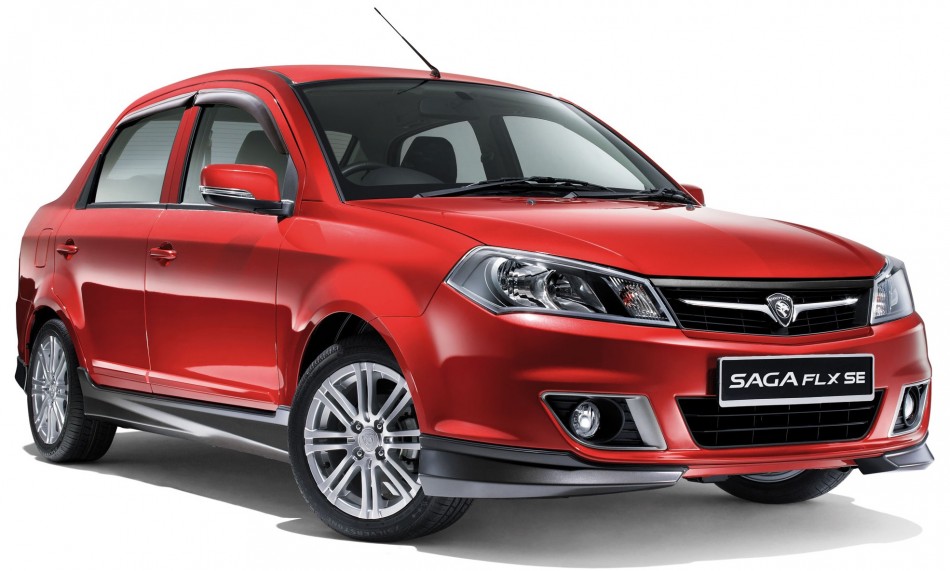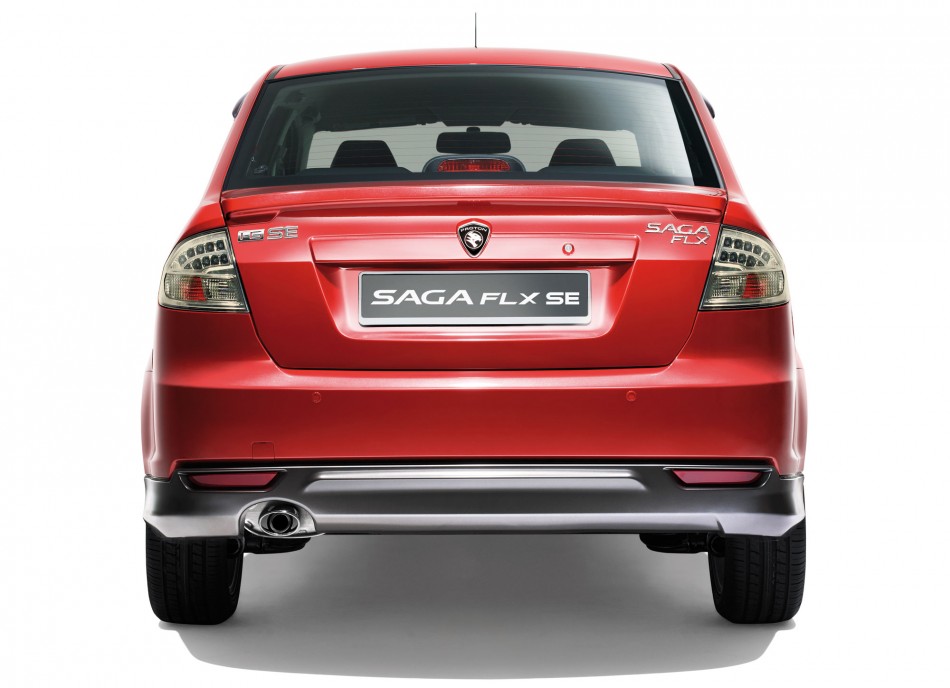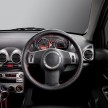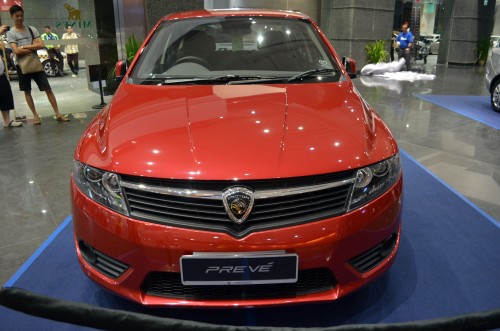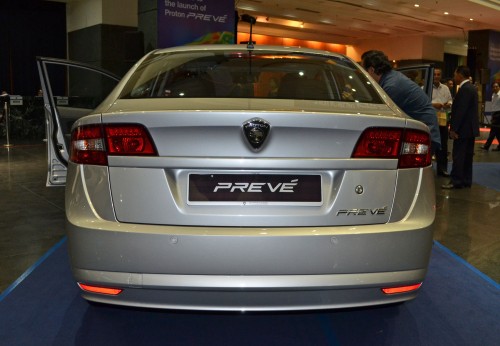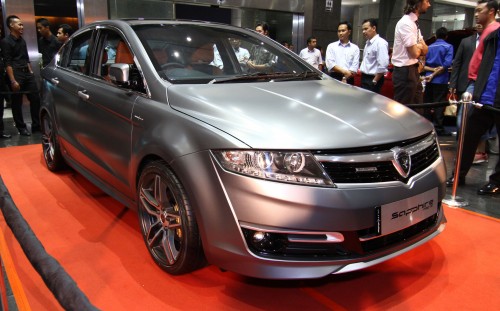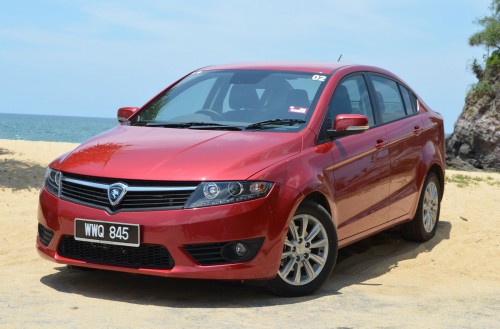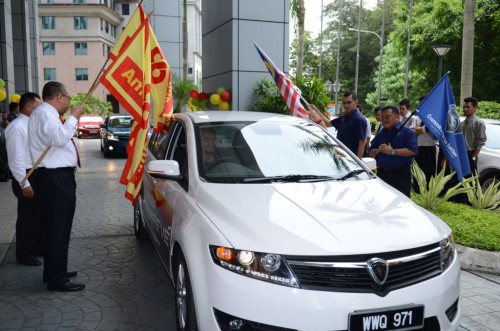Tuesday, July 17, 2012
Grand Tiger
As the first high end pickup in China, Grand tiger belongs to the fifth generation pickup in the world. Grand tiger is designed according to latest trend of development, and in step with TUNDRA™ , Nissan FRONTIER™ , which are Toyota's car models currently selling well in North America. Grand tiger embodies newest technologies and design theories. Thereby, keeping in step with the newest car models developed in the international market.
Grand tiger relies on purchasing first grade global auto components, equipped with the most technically advanced high-tech auto components. We select and use components made by world famous brands such as Toyota and Nissan, the quality of the entire vehicle is in step with world trends.
Chinese automakers are slowly making a mark in the local auto industry as consumers cosy up to the various China-made models introduced here.
One of the latest to make an entrance into Malaysia is the Grand Tiger pick-up truck, manufactured by ZX Auto Co Ltd.
The 2.9-litre engined Grand Tiger pick-up truck was first brought into the local market by Orient Sun Motors Sdn Bhd in December last year and was well received by the buying public.
Orient Sun’s chief executive officer Quek Wang noted that there are about five to six orders a month and expects sales to pick up later in the year when the 2.5 litre model hits local shores.
“The pick-up market is a growing market with quite impressive growth rates,” Quek said.
Orient Sun was incorporated in 2009 and started off providing support and maintenance work for RapidKL. But when the opportunity came for the company to distribute pick-up trucks, Orient Sun shifted its focus to vehicle distribution.
The Grand Tiger pick-up trucks are brought in as completely knocked down (CKD) units and are assembled locally by Oriental Assemblers Sdn Bhd, a subsidiary of Oriental Holdings Bhd, in Tampoi, Johor Baru.
“The motor industry is an exciting industry. You can’t do away with it because the landscape is such that we will still need cars,” Quek said.
To put it plainly, he explained that a new batch of 18-year-olds will be eligible to own a car every year, which means new demand for carmakers.
Although the pick-up segment is a small one compared to the total industry volume (TIV) for vehicles, Quek noted that there is potential for the pick-up market to grow.
While TIV last year was 600,123 units, the pick-up segment grew by 8.5% to 43,847 units from 40,414 units in 2010.
“The growth was lower than expected. The industry had estimated that sales of new pick-ups would reach about 46,000 units but the market was disrupted by the tsunami in Japan and severe floods in Thailand last year,” he said.
For 2012, he said TIV for pick-up vehicles is expected to reach 50,000 units.
The pick-up market is dominated by the 2.5 litre models and Quek aims to get a good slice of the pie with the arrival of the 2.5 litre Grand Tiger in August.
Quek hopes to establish the Grand Tiger brand in Malaysia as a more affordable option among the pick-up trucks.
The pick-up truck market in Malaysia is competitive as it is not a big market like in Thailand where TIV for pick-up trucks is about 300,000 units a year. Currently, the main players in the local arena include Ford and Nissan.
Quek is aware that consumers are apprehensive about China-made goods but noted that not everything from the country is of suspect quality.
Quek and his team are looking at more roadshows and promotional efforts ahead to establish the brand and boost consumer confidence in Grand Tiger.
“Not every brand is good. That is why we want to bring in only the top makes in China. These are the brands that are more trustworthy,” he said.
Grand Tiger’s advantage in the competitive segment could well be its pricing. Quek said the Grand Tiger is “the cheapest 4X4 in town”.
With complete accessories and a manual drive train, a Grand Tiger pick-up comes at an affordable price of about RM69,000.
Orient Sun is looking at sales of 300 to 350 units this year. But when the 2.5 litre model comes out, Quek is looking at sales of 300 units a month next year onwards.
“At the moment, we are selling the 2.9-litre model mainly to establish our name as a tough, utility vehicle good for multiple usages such as in construction sites, palm oil plantations and so on,” he said.
Quek, who has been in the automotive industry for many years, has dealt with top brands such as Renault, Ford and Tata.
Equipped with his years of experience, Quek is aggressive in his vision for the brand.
He hopes to capture about 5% of the pick-up market in two years' time.
Currently, Orient Sun has a network of 15 dealers that are selling the Grand Tiger model and he aims to expand the network to about 20 to 23 dealers by year-end.
“I am quite picky with how many dealers we have because we don’t want too many, which could lead to a price war. I want to make sure that our dealers make money and are sustainable,” he said.
Quek noted that margins will be lower given their lower selling price for Grand Tiger, but he is adamant about biting the bullet and driving sales volume first.
“That’s how we start. We will look at a price increase later,” he said.
Picking a niche market is also part of Grand Tiger’s strategy to win market share.
Orient Sun is targeting the utility market of small business owners who buy pick-up trucks for work and family use.
One of the challenges faced by the automotive industry is financing.
Bank Negara Malaysia drew up guidelines last November aimed at promoting prudent and responsible retail financing practices, but the new guidelines have created a hurdle for potential car owners seeking loans.
The Malaysian Automotive Association noted that there was a 25% drop in new car sales when the guidelines came into effect in January this year.
Orient Sun is similarly affected by the new guidelines.
“A lot of our customers are middle-income so getting a loan is important. But it is difficult for them at this moment to get loans and there is lower approval rate for loans. So, at the end of the day, a lot of orders do not materialise,” Quek said.
Nonetheless, with the pick-up market set to grow, Quek is optimistic that Grand Tiger’s trucks can make a name for themselves in the local market.
2012 Peugeot 207 Sedan
The French's answer to the Honda City and Toyota Vios, the 2012 Peugeot 207 Sedan gives Malaysians a taste of Continental cars at an affordable price. Despite being based on an aging platform borrowed from the Peugeot 206 hatchback, the 2012 Peugeot 207 Sedan remains class-competitive in terms of ride-and-handling, performance and quality, while lFind the 2012 Peugeot 207 Sedan awkward-looking? Despite Peugeot's decision to name this B-segment sedan “207 Sedan” instead of “206 Sedan” in line with its origins, a glance would reveal the car on which the 207 Sedan is based. The Peugeot 206 hatchback was perhaps the product of French flair, but the Peugeot 207 Sedan certainly cannot claim to be? Adding a boot, creating a sedan from a hatchback, rarely works; the end car is often awkward-looking towards the rear. The Mazda2 Sedan, the Ford Fiesta Sedan, the Suzuki SX4 Sedan, and now the Peugeot 207 Sedan are all proof of that. There are many things to like about the 2012 Peugeot 207 Sedan, but appearance is not one of themeading the segment with its equipment count and sheer value for money.
The 2012 Peugeot 207 Sedan inherits the chassis from the Peugeot 206 hatchback, suspended by MacPherson struts at the front and a torsion beam at the rear. The suspension has been recalibrated to account for the increased weight over the rear wheels. On the roads, the ride-and-handling characteristics are typical of Peugeot and most European cars, giving the Peugeot 207 Sedan on-road sophistication unmatched by Japanese rivals. The 2012 Peugeot 207 Sedan is tuned with a bias towards comfort, meaning that the handling is secure, predictable and stable, but not sporty or entertaining, with more body roll and less grip than enthusiasts would prefer. While not quick enough for spirited driving, the hydraulic steering is well-weighted—its heavier-than-the-norm weighting inspiring confidence.
The ride quality is brilliant for this class of cars, proving to be composed and supple over broken surfaces and road undulations. The suspension rarely gets caught out; the same cannot be said for Japanese rivals. Occupants can sit in relative peace as well, as the cabin refinement is reasonably good by class standards even at highway speeds. Seat-height adjustments are available, but the lack of steering column reach adjustments means that finding an ideal driving position could prove futile. Moreover, the location of certain controls would require some time to get used to, in particular the front and rear power window switches that are located between the front seats instead of on the doors. The Jaeger-designed instrument panel is easy to view, however.
The cabin design is borrowed from the Peugeot 206 hatchback, and so are the cabin components. The impression you immediately get upon entering the 2012 Peugeot 207 Sedan is how dated it feels inside. There is no glaring build quality issue to speak of, but as you might expect, the cabin plastics are only of a decent quality commensurate with this price range—nothing plush and soft like in more expensive Peugeot models. At least the steering wheel is leather-wrapped. The switches and buttons work precisely, just not with the kind of tactility usually associated with Peugeot models higher up the range. Given that the 2012 Peugeot 207 Sedan is mechanically-identical to the proven Peugeot 206 hatchback, reliability should be the last of your worries.
The 2012 Peugeot 207 Sedan is powered by a 1.6-litre DOHC 16-valve four-cylinder engine from the long-standing TU5 family, drawing upon a maximum of 110 hp at 5800 rpm and 147 Nm at 4000 rpm. A four-speed adaptive automatic gearbox with Tiptronic manual shifting, a sport mode and a snow/traction mode channels the generated power to the front wheels. The engine demonstrates itself to be smooth in delivery, responsive under throttle, and powerful enough for the 2012 Peugeot 207 Sedan's character and targeted audience. The four-speed gearbox performs in the same fuss-free manner, though occasional thuds can be heard.
Interior room cannot possibly be great as the 2012 Peugeot 207 Sedan shares the same wheelbase as the Peugeot 206 hatchback. Expectedly, the driver and front passenger enjoy more room than those at the rear, which provides a merely adequate amount of legroom, though headroom is never lacking. Like for most cars in the B-segment, seating three occupants across the back is not recommended for long trips due to limited shoulder room. The boot is spacious at 420 litres, and can be further expanded via 60/40 split-folding rear seats that fold to form a completely flat floor.
The 2012 Peugeot 207 Sedan's fuel economy is officially rated as 16.4 km/litre, which is an impressive figure however you look at it. Real-world driving tends to be less than gentle, and you will do well to achieve 80 percent of that figure, or 13.1 km/litre. Costs related to maintenance and repairs are expected to be highly competitive with those for rivals. The biggest running cost could be depreciation, however, considering the Peugeot 207 Sedan's limited desirability and how the Peugeot brand has only recently found its footing in Malaysia. The generous equipment and proven The 2012 Peugeot 207 Sedan is the French's answer to the Honda City, Toyota Vios, and Mazda 2 Sedan, all cars converted from hatchbacks to sedans to cater for developing markets including Malaysia. The Peugeot 206 hatchback attached with a boot, the Peugeot 207 Sedan gives Malaysians a taste of Continental cars at an affordable price. In fact, the 2012 Peugeot 207 Sedan is the cheapest Continental car on sale in Malaysia, and, despite being based on an aging platform, it remains competitive in terms of ride-and-handling, performance and quality against Japanese B-segment rivals. One could dismiss the 2012 Peugeot 207 Sedan for its awkward looks and potentially above-average depreciation, but there is simply no denying the value on offer here, not least because of an equipment list that cannot get more comprehensive at this price level.reliability should work in preserving value, though.
The 2012 Peugeot 207 Sedan comes with generous standard equipment including 15" alloy wheels, automatic headlamps with “follow-me-home” function, front/rear fog lights, automatic wipers, keyless entry, rear parking sensors, leather-wrapped steering wheel, automatic climate control, and six-speaker audio system with CD changer, MP3/WMA compatibility and USB/Bluetooth connectivity. The safety kit comprises dual front SRS airbags (front passenger airbag can be deactivated), front seatbelt pretensioners, braking controls (ABS with EBD and EBA), and two rear ISOFIX anchor points. The SV variant adds on a body kit, door visors, rear spoiler, chrome tail-pipe, leather-and-suede seat material, leather door trim, and a special logo on the front seats.Peugeot has not provided a carbon dioxide emissions figure. Going by the impressive official fuel economy of 16.4 km/litre, the official carbon emissions should be reasonable as well. The real environmental impact will depend very much on how the 2012 Peugeot 207 Sedan is driven. An aggressive driving style that involves consistently high revs may be fun, but ultimately hurtful to both the wallet and the environment. Stay away from the gearbox's sport mode, which improves the performance by down-shifting more readily and holding gears for a longer period.
Sunday, July 15, 2012
PROTON SAGA FLX SE
New FLX SE variant, Proton is marrying what’s good from both cars (1.6L + CVT) and sweetens it further with the usual sporty SE add ons.
Upon closer inspection, the FLX SE’s 1.6L Campro puts out 108 hp at 5,750 rpm and 150 Nm at 4,000 rpm. The current Executive 1.6L with 4AT makes 110 hp at 6,500 rpm and 148 Nm at 4,000 rpm. Nothing significant, except that peak power is made 750 rpm lower in the CVT equipped FLX SE. The variance seen here is probably due to the engine being retuned to match the CVT.
The FLX SE is available in Fire Red (as seen here) or Solid White, and it wears a full bodykit that is painted grey to contrast with the red. This hue is repeated on the strip above the grille and the side skirts; although likely, we can’t confirm if the lower rear bumper is in the same colour. At the back, the lamp cluster is now in clear lense/silver style for maximum bling effect.
The SE comes with 15-inch eight-spoke alloy rims, the first time a Saga is leaving the factory wearing rims bigger than 14 ins. Along with that comes wider tyres – 195/50 compared to the current 185/60.
Equipment wise, the Saga FLX SE gets leather seats, leather wrapped wheel, stereo with MP3/USB/AUX, dual airbags, ABS + EBD, steering audio buttons and driver’s seat height adjuster, among other kit. The meter panel now has a white backlight, no longer orange, and the centre console, door handles and air-con vents are trimmed in Satin Black.
Thursday, July 12, 2012
Proton Exora Prime and Bold
The Exora, are now available and come with an all-new 1.6-litre Campro Charge Fuel Efficiency (CFE) 4-cylinder petrol engine with performance said to be comparable to that of a 2-litre engine. The new variants, with tentative prices ranging RM70,998 to RM88,998, are known as the Exora Bold Premium and Exora Prime.
“The combination of the Campro CFE engine and CVT (continuously variable transmission) not only gives the Exora Bold Premium and Exora Prime greater efficiency and fuel economy,” said Proton Holdings Berhad Group MD, Dato’ Sri Haji Syed Zainal Abidin Syed Mohamed Tahir.
He added that CFE uses the forced induction technology which provides maximum power at lower rpm. The increase in power output is 8% to 138 bhp while torque is raised by about 37% to 205 Nm, available between 2000 and 4000 rpm. While the CFE engine runs on the same 10:1 compression ratio as the CPS engine without forced induction, it has a stroke of 86 mm, 2 mm less than the CPS engine. The bore remains the same for both engines but it is not known if the stroke length is due to using a shorter con-rod or a different piston. The resulting displacement is 1561 cc instead of 1597 cc. The top speed with the CFE engine is claimed to be 185 km/h.
Boosted with the more efficient 1.6-litre engine, customers will experience powerful performance which is comparable to a 2.0-litre engine, with much lower fuel consumption. The additional power kicks in to provide more pulling power when accelerating or overtaking. In short, it’s what you can aptly describe as a “pay-as-you-go” engine, which gives you more “vroom” for every litre of petrol used.”
The benefits of the CVT include the intelligence of selecting the best ratio that would suit a particular driving condition, thus allowing the Exora to achieve high fuel efficiency. The transmission is also ‘stepless’ so transitions between ‘gears’ (there are actually no gears in a CVT) is smooth.
The Exora Bold is available in executive trim powered by a 1.6-litre Campro CPS engine and available with both manual and automatic transmissions. There is also a lower-priced version (estimated to be RM59,998) with standard trim which is powered by the same engine and manual transmission.
The exclusive 6-seater Exora Prime features a number of enhancements. The exterior upgrades include an all-new front and rear bumper design, electric folding door mirrors; rear disc brakes; blacked-out headlamps; smoked rear combination lights; 16-inch inch gold-finished alloy rims; a rear garnish finishing; and a newly-introduced colour known as Absolute Brown.
The all-new leather interior is complemented by the walnut centre panel finishing, gear panel bezel, air-conditioning vent outlets and metallic beige door switch covers and inner door handles. The Exora Prime is also equipped with second row Captain’s Seats, headrest monitors and an audio system incorporating GPS route navigation and a reverse camera
The Exora Bold Premium also comes with electric folding door mirrors, rear disc brakes, 16-inch alloy wheels, and a new front and rear bumper design. The interior has sportier treatment in the form of a dual-tone combination leather seats with liquid silver appointments on the gear panel bezel, door switch cover, air-conditioning vent outlets and inner door handles. This variant also has a reverse camera and rearview mirror incorporating a LCD.
“The Exora Bold Premium and Exora Prime offer consumers exclusive and elegant styling combined with Lotus Ride and Handling for excellent grip, stability, response and safety, all, at an affordable price and the best value for money for a vehicle in its class, in line with our brand promise of ‘Committed to be Better’,” said Dato’ Sri Haji Syed Zainal Abidin
Monday, July 9, 2012
TOYOTA CAMRY
The 2012 Toyota Camry ranks 10 out of 19 Affordable Midsize Cars. This ranking is based on our analysis of 14 published reviews and test drives of the Toyota Camry, and our analysis of reliability and safety data.
Auto reviewers think Toyota made the best-selling Camry even better with a redesign for 2012 thanks to its excellent fuel economy, refined performance and high-quality interior.
Test drivers like the redesigned 2012 Toyota Camry for its roomy interior, best-in-class non-hybrid, non-diesel fuel economy, relaxed ride and smooth engines. With the changes for 2012, most reviewers expect the Camry to retain its position as one of the best-selling cars in the class.
The automotive press says the 2012 Camry gives shoppers a good mix of comfort, engine power, interior space and technology. They’re glad Toyota made improvements where necessary and left other areas that didn’t need tweaking unchanged. Motor Trend says, "Besides being a best-seller, it has arguably been the best car in its class for 20 years, so improvements tend to be incremental, not phenomenal, like those of the '08 Chevy Malibu, '10 Ford Fusion, '11 Hyundai Sonata, and possibly the '12 VW Passat."
The main gripe reviewers have with the 2012 Toyota Camry is its redesigned exterior. Although they think it looks better than the 2011 model, they still note that the Camry has a conservative, bland look. While some say they wish Toyota would make the Camry a little more edgy, they understand that bold styling might limit the Camry’s mass-market appeal.
If you’re shopping for a roomy, capable, fuel-efficient midsize sedan, auto reviewers say the 2012 Camry is definitely worth a test drive.
Wednesday, June 13, 2012
Volkswagen CC




 The 2012 Volkswagen CC is essentially the alter ego of the VW Passat; while they're both sedans, the CC takes a path that's more daring in design and packaging—albeit at the expense of some practicality. To many, that's just fine, and the CC can be misjudged as a more expensive, more premium car that it is.
Design-wise, the CC takes after the Mercedes-Benz CLS with its stunning, coupe-like silhouette, frameless windows, and long, flowing design—plus a rear deck that tucks down instead of rising upward. The interior is a little different in layout than most sedans—it's a four-passenger sedan, with two individual seats in back, and the dash and doors are a little more lavishly trimmed than the typical mid-size sedan, with details like contrast stitching, contrast-color themes for the upholstery. New for 2012, CC models get a new analog clock above the radio.
The look implies that the 2012 CC is sportier than the Passat, though that's not altogether true. Straight-line acceleration is good from the 200-horsepower, 2.0-liter turbocharged four that's offered on most of the lineup; it's exceptionally smooth, and makes its peak torque of 207 pound-feet without revving high. What's more, it pairs really well with VW's excellent DSG automatic (the manual is also a good choice). A top VR6 4Motion Executive model steps up to a 3.6-liter VR6 engine and 4Motion all-wheel-drive guise, but altogether this combination gives the CC a noticeably heavier, but not altogether much quicker, personality—so we much prefer the four. Across the lineup, the CC handles well, but with its overly light steering and rather soft suspension calibration, it's clear that comfort is the priority over all-out performance.
Four-cylinder models—in addition to being relatively responsive and fuel-efficient—ride quite well, and across the model line the lavish interior trims feel luxury-car caliber. VW seems to have done well with the CC's frameless-window design, as the cabin feels tight and serene, with little road or wind noise.
Depending on what you're seeking in a sedan, the CC's odd but stylish seating arrangement could be a deal-breaker, or it could leave you more intrigued. The somewhat cramped backseat is only designed for two, and with limited headroom it's abundantly clear that the 2012 Volkswagen CC is a vehicle that was designed for form over function. In front, the seat position is simply a bit odd, with a scooped-up feeling that can also make headroom quite limited. Occupant safety looks strong for the CC, though, with IIHS Top Safety Pick status.
Six different trims of the CC are offered for 2012, including a sporty 2.0 R Line model that adds thin-spoke Mallory alloys, lower-body skirts, darkened taillights, and reflector-lens fog lights. All the models come very well equipped, with the base Sport including heated power front seats, a touch-screen sound system with HD Radio, Bluetooth hands-free, iPod connectivity, and 17-inch alloy wheels. For 2012, Lux Plus, Lux Limited, and 4Motion Executive models get new walnut inserts. An excellent Dynaudio sound system remains offered only on the top Executive VR6.
The 2012 Volkswagen CC ranks 9 out of 19 Upscale Midsize Cars. This ranking is based on our analysis of 21 published reviews and test drives of the Volkswagen CC, and our analysis of reliability and safety data.
The 2012 Volkswagen CC sacrifices function for style with its four-door coupe design and seating for four, but reviewers agree its looks inside and out help it stand out from the pack.
Though you may see more Jettas and Passats on the road, the 2012 Volkswagen CC is a car you should consider if you value style over practicality.
The Volkswagen CC is a good choice for drivers who want four doors, but rarely seat three in the back. Because it only seats four, it may not be the best family sedan. But reviewers say the compromise is worth it, and frequently compare its looks to the Mercedes-Benz CLS-Class.
The 2012 Volkswagen CC’s base turbo four-cylinder engine is well-liked by test drivers, who often say that the powerful V6 option isn’t worth the extra money. All-wheel drive is available, but you’ll pay more than $10,000 for it, since it comes standard only on the top-of-the-line six-cylinder model. If you want all-wheel drive and a four-cylinder engine on the CC, you’re out of luck.
Overall, reviewers think the 2012 CC’s lower trim levels are a good value for the money, with their class-competitive turbo four-cylinder engine, good fuel economy, smooth transmission and upscale interior. But most think the pricey V6 trim isn’t worth the extra dough. Other cars in this class offer more powerful V6 engines for less money.
The 2012 Volkswagen CC is essentially the alter ego of the VW Passat; while they're both sedans, the CC takes a path that's more daring in design and packaging—albeit at the expense of some practicality. To many, that's just fine, and the CC can be misjudged as a more expensive, more premium car that it is.
Design-wise, the CC takes after the Mercedes-Benz CLS with its stunning, coupe-like silhouette, frameless windows, and long, flowing design—plus a rear deck that tucks down instead of rising upward. The interior is a little different in layout than most sedans—it's a four-passenger sedan, with two individual seats in back, and the dash and doors are a little more lavishly trimmed than the typical mid-size sedan, with details like contrast stitching, contrast-color themes for the upholstery. New for 2012, CC models get a new analog clock above the radio.
The look implies that the 2012 CC is sportier than the Passat, though that's not altogether true. Straight-line acceleration is good from the 200-horsepower, 2.0-liter turbocharged four that's offered on most of the lineup; it's exceptionally smooth, and makes its peak torque of 207 pound-feet without revving high. What's more, it pairs really well with VW's excellent DSG automatic (the manual is also a good choice). A top VR6 4Motion Executive model steps up to a 3.6-liter VR6 engine and 4Motion all-wheel-drive guise, but altogether this combination gives the CC a noticeably heavier, but not altogether much quicker, personality—so we much prefer the four. Across the lineup, the CC handles well, but with its overly light steering and rather soft suspension calibration, it's clear that comfort is the priority over all-out performance.
Four-cylinder models—in addition to being relatively responsive and fuel-efficient—ride quite well, and across the model line the lavish interior trims feel luxury-car caliber. VW seems to have done well with the CC's frameless-window design, as the cabin feels tight and serene, with little road or wind noise.
Depending on what you're seeking in a sedan, the CC's odd but stylish seating arrangement could be a deal-breaker, or it could leave you more intrigued. The somewhat cramped backseat is only designed for two, and with limited headroom it's abundantly clear that the 2012 Volkswagen CC is a vehicle that was designed for form over function. In front, the seat position is simply a bit odd, with a scooped-up feeling that can also make headroom quite limited. Occupant safety looks strong for the CC, though, with IIHS Top Safety Pick status.
Six different trims of the CC are offered for 2012, including a sporty 2.0 R Line model that adds thin-spoke Mallory alloys, lower-body skirts, darkened taillights, and reflector-lens fog lights. All the models come very well equipped, with the base Sport including heated power front seats, a touch-screen sound system with HD Radio, Bluetooth hands-free, iPod connectivity, and 17-inch alloy wheels. For 2012, Lux Plus, Lux Limited, and 4Motion Executive models get new walnut inserts. An excellent Dynaudio sound system remains offered only on the top Executive VR6.
The 2012 Volkswagen CC ranks 9 out of 19 Upscale Midsize Cars. This ranking is based on our analysis of 21 published reviews and test drives of the Volkswagen CC, and our analysis of reliability and safety data.
The 2012 Volkswagen CC sacrifices function for style with its four-door coupe design and seating for four, but reviewers agree its looks inside and out help it stand out from the pack.
Though you may see more Jettas and Passats on the road, the 2012 Volkswagen CC is a car you should consider if you value style over practicality.
The Volkswagen CC is a good choice for drivers who want four doors, but rarely seat three in the back. Because it only seats four, it may not be the best family sedan. But reviewers say the compromise is worth it, and frequently compare its looks to the Mercedes-Benz CLS-Class.
The 2012 Volkswagen CC’s base turbo four-cylinder engine is well-liked by test drivers, who often say that the powerful V6 option isn’t worth the extra money. All-wheel drive is available, but you’ll pay more than $10,000 for it, since it comes standard only on the top-of-the-line six-cylinder model. If you want all-wheel drive and a four-cylinder engine on the CC, you’re out of luck.
Overall, reviewers think the 2012 CC’s lower trim levels are a good value for the money, with their class-competitive turbo four-cylinder engine, good fuel economy, smooth transmission and upscale interior. But most think the pricey V6 trim isn’t worth the extra dough. Other cars in this class offer more powerful V6 engines for less money.
Tuesday, June 5, 2012
Nissan Sentra tuned by IMPUL

 Nissans have a strong reputation for reliability and durability, coupled with low running costs… attributes which customers are always looking for. And for those who don’t need the latest model in their garage or porch, the Sentra remains a practical car to buy.
Over the years, ETCM has kept adding enhancements to the Sentra to freshen its looks periodically. At different times, the enhancements have made the car look more elegant or more sporty, appealing to different segments of the market. In fact, ETCM’s continued development of the Sentra even prompted Nissan to allow it to export the model to Indonesia for sale there. From Dato’ Dr Ang’s statements that the Sentra will be around for some years to come, it sounds like it will catch up with the other long-running model, the Sunny, which was available in this market for 13 years.
This time round, with its tie-up with IMPUL Motor Racing Development of Japan, ETCM has created an IMPUL version for the Sentra. This would be the fourth model that has received the Impul upgrade, the others being the Latio, Sylphy and Grand Livina.
For the IMPUL Sentra, the following items have been added: aerokit (including rear spoiler), sports suspension system which lowers the ride height by about 25 mm, IMPUL’s Blast II exhaust muffler, and bronze-finished 16-inch IMPUL FS-16 alloy wheels (imported from Japan) which replace the standard 14-inch wheels.
The following are the prices (inclusive of roadtax/insurance) for IMPUL versions of the different Sentra variants:
Sentra 1.6L MT Comfort - RM94,500
Sentra 1.6L MT Luxury - RM98,500
Sentra 1.6L AT Comfort - RM98,600
Sentra 1.6L AT Luxury - RM102,600
Nissans have a strong reputation for reliability and durability, coupled with low running costs… attributes which customers are always looking for. And for those who don’t need the latest model in their garage or porch, the Sentra remains a practical car to buy.
Over the years, ETCM has kept adding enhancements to the Sentra to freshen its looks periodically. At different times, the enhancements have made the car look more elegant or more sporty, appealing to different segments of the market. In fact, ETCM’s continued development of the Sentra even prompted Nissan to allow it to export the model to Indonesia for sale there. From Dato’ Dr Ang’s statements that the Sentra will be around for some years to come, it sounds like it will catch up with the other long-running model, the Sunny, which was available in this market for 13 years.
This time round, with its tie-up with IMPUL Motor Racing Development of Japan, ETCM has created an IMPUL version for the Sentra. This would be the fourth model that has received the Impul upgrade, the others being the Latio, Sylphy and Grand Livina.
For the IMPUL Sentra, the following items have been added: aerokit (including rear spoiler), sports suspension system which lowers the ride height by about 25 mm, IMPUL’s Blast II exhaust muffler, and bronze-finished 16-inch IMPUL FS-16 alloy wheels (imported from Japan) which replace the standard 14-inch wheels.
The following are the prices (inclusive of roadtax/insurance) for IMPUL versions of the different Sentra variants:
Sentra 1.6L MT Comfort - RM94,500
Sentra 1.6L MT Luxury - RM98,500
Sentra 1.6L AT Comfort - RM98,600
Sentra 1.6L AT Luxury - RM102,600
Thursday, May 31, 2012
Proton Inspira
Handling
Much of the work Proton did was concentrated on improving the 2012 Proton Inspira's ride-and-handling. Even so, Mitsubishi limited the scope of changes: Proton was allowed to choose the tyre supplier (tyre size still 205/60 R16), use different shock absorbers, increase the size of the front/rear stabiliser bars, and tune the stabiliser bar and damper settings. The end result, Proton says, is a car that rolls less through corners and is more predictable at the limit compared with the Mitsubishi Lancer. On the move, the 2012 Proton Inspira is indeed less twitchy, containing body roll well, gripping on strongly and feeling very composed even when pushed hard. The steering is accurate though short on feedback and heft. While not as sporty to handle as the Proton Waja, the car it replaces, the 2012 Proton Inspira provides a better balance between handling prowess and ride comfort.
Comfort
The ride comfort is excellent, as road irregularities and undulating surfaces are nicely isolated. Cabin refinement is much better than any Proton's, but still some way short of a Toyota's, with engine drone at higher revs the biggest issue. The carried-over interior, dominated by a simple dash design, offers good ergonomics with controls and instrumentation that are intuitively positioned, easy-to-use and plain-in-sight. The seats are supportive, while the driver's seat adjusts for height. The steering, however, does not adjust for reach, which could pose a problem for certain drivers.
Quality + Reliability
Proton claims to have found better methods of manufacturing the interior panels, and that the 2012 Proton Inspira is equipped with a higher-quality interior than the Mitsubishi Lancer as a result. While we cannot be certain of that, the Proton Inspira is much better-built inside than any Proton is, and that will probably remain true for years to come. Quality plastics are used for high-contact areas, the fit-and-finish are completed to Mitsubishi standards, and the switchgear feels tactile to operate. What's not to like? The engines and transmissions have been proven reliable in the Lancer, and should remain so in the 2012 Proton Inspira.
Performance
Carried over unchanged from Mitsubishi, the 150 hp, 197 Nm 2.0-litre engine offers a strong on-road performance that never leaves you wishing for more power. Likewise, the 140 hp, 177 Nm 1.8-litre engine churns out enough oomph for your daily overtaking and highway cruising. Both engines prove willing to rev, hitting their peak power at 6000 rpm and peak torque at 4250 rpm. However, the 1.8-litre's engine note becomes especially loud and unpleasant at high revs—a situation made worse by the CVT. Keen drivers will find the CVT's six virtual ratios very handy, though those yearning for mechanical interaction will find pleasure in the five-speed manual gearbox (only with the 1.8-litre), which features a light clutch and feels precise to shift.
Roominess
Like in the Mitsubishi Lancer, the 2012 Proton Inspira is never lacking in space whether up front, at the back or in the boot. The driver and front passenger have plenty of room at their disposal, along with excellent support from the front seats. Those behind should not have too much to complain about, either, with no lack of leg- or head-room. Shoulder room is compromised with three passengers at the back, and the rear seating bench is not as comfortable as the front seats—though both remain true for rivals. The 400-litre boot can be expanded using the 60:40 split-fold rear seatbacks if required.
Running Costs
The 1.8 manual, 1.8 CVT and 2.0 CVT variants return fuel economy of 15.9 km/litre, 16.1 km/litre and 15.9 km/litre, respectively. All figures are highly impressive for a mid-size car, except that these figures, supplied by Proton, are only achievable when travelling at a constant speed of 90 km/h; frequent stop-start driving, common in an urban environment, would be much less economical. Car maintenance and servicing costs should be affordable, even in the longer term considering the car's proven reliability. Despite the Proton badge, the Inspira should hold on to its value relatively well compared with other Proton models. One would expect the trusted Mitsubishi underpinnings rather than the less desirable Proton reputation to dictate the Inspira's value in the resale market; only time will tell, however.
Value for Money
Born out of a technical agreement with Mitsubishi, the 2012 Proton Inspira is almost exactly the same as the Mitsubishi Lancer, except for some visual differentiation and suspension tweaking. The fact is that, with such a good base to work upon, Proton simply cannot go wrong with the Inspira, which exhibits traits like good looks, excellent ride-and-handling, and refinement and quality that are years ahead on any Proton. The 2012 Proton Inspira is easily the best local model to date, and, when you consider the value-for-money proposition, it is clearly the best car in the sub-RM 100K segment.
Equipment
Standard items include 16" alloy wheels, front fog lamps, “Welcome Home” and “Coming Home” light system, auto-off lights, keyless entry, power-adjustable side mirrors, reverse sensors, trunk lid remote release, leather steering wheel with audio controls, and Arkamys audio system with CD-player, MP3-compatibility and Bluetooth-connectivity. Safety features comprise dual front SRS airbags, front seatbelt pretensioners, ISOFIX points, and ABS with EBD. The Premium variant adds on a body kit complete with rear spoiler, paddle shifters, automatic headlights, automatic wipers, automatic climate control, leather upholstery, GPS navigation system, and auto cruise function controllable via steering wheel switches.
Environment
Proton has not supplied figures for the Inspira, but Mitsubishi has listed the fuel economy and carbon emissions of comparable Lancer variants: the 1.8 manual variant emits 183 grams/km and consumes 13.0 km/litre; the 1.8 CVT variant with 188 grams/km and 12.7 km/litre; and the 2.0 CVT variant with 196 grams/km and 12.2 km/litre. These figures are about average in the mid-size sedan segment. With no changes to the powertrain, it is fair to assume the same set of data for the 2012 Proton Inspira.
Friday, May 4, 2012
PROTON PREVE
The Prevé is offered in three variants, each with its unique engine/transmission combo. The two Executive variants are powered by Proton's venerable 1,597cc Campro IAFM+ engine with the choice between a Getrag 5-speed manual transmission and a Punch CVT with six virtual ratios.
Top of the line is the Premium model powered by the turbocharged Campro CFE engine paired exclusively to a more elaborate CVT also from Punch, but featuring seven virtual ratios and paddle shifters for manual overriding. Early booking numbers from Proton show that majority of orders have been for this variant.
Both engines powering the Prevé are already familiar hardware in Proton cars before its launch. The Executive model's Campro IAFM+ engine has been in service since the Persona was launched, and its outputs of 108hp @ 5,750rpm and 150Nm @ 4,000rpm are identical to the Saga FLX SE, which also shares its CVT2 transmission.
Meanwhile, the more advanced Campro CFE engine, which displaces 1,561cc due to a shorter cylinder stroke, is the same one that debuted in the Exora. It makes 138hp @ 5,000rpm and 205Nm @ 2,000 - 4,000rpm. Its CVT however, is a little more advanced than the Exora's although the basic hardware is identical.
The Prevé is developed on the Exora's platform, but with a new rear subframe that incorporates independent multi-link suspension. Front wheels are suspended by MacPherson struts, and Proton is sticking with hydraulic power steering despite current trends favouring electric assist. No complaints from an enthusiast's point of view. All-round disc brakes are standard.
Safety equipment of all three variants are relatively on par. Although the IAFM models have to make do without traction control, stability control, and side airbags, they still get ABS, EBD, dual airbags, front active head rest, and anti-pinch driver power window. What's a little shocking however, is that ISOFIX child mounts are offered only in the CFE model.
Other spec differentiations include auto air-con, push start button, cruise control, rain sensors, auto headlights, and auto folding side mirrors, all items exclusive to the CFE. Creature comforts that the IAFM models do get are steering-mounted controls, remote boot release, and in-car WIFI. On-board audio features MP3 playback, Bluetooth, USB, and iPod connectivity. The CFE model also gets a built-in GPS.
Available in six colour choices: Blue Lagoon, Fire Red, Tranquility Black, Solid White, Genetic Silver and Elegant Brown, the Prevé can be test driven at all Proton authorized showrooms nationwide. The Prevé is priced from RM72,990 on-the-road (Peninsular Malaysia) for the CFE variant, RM62,990 for the IAFM CVT and RM59,990 for the IAFM manual. All variants come with a 5-year / 150,000km warranty.
Subscribe to:
Posts (Atom)













